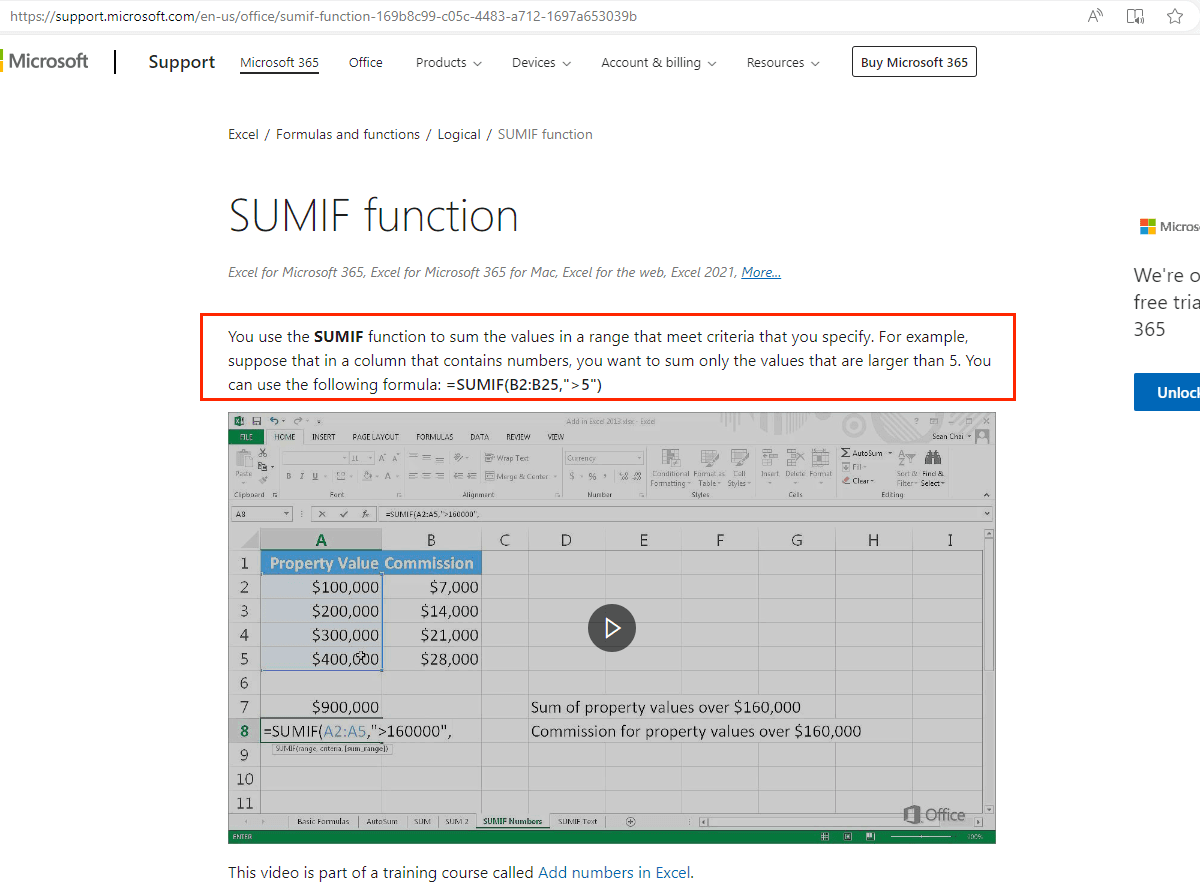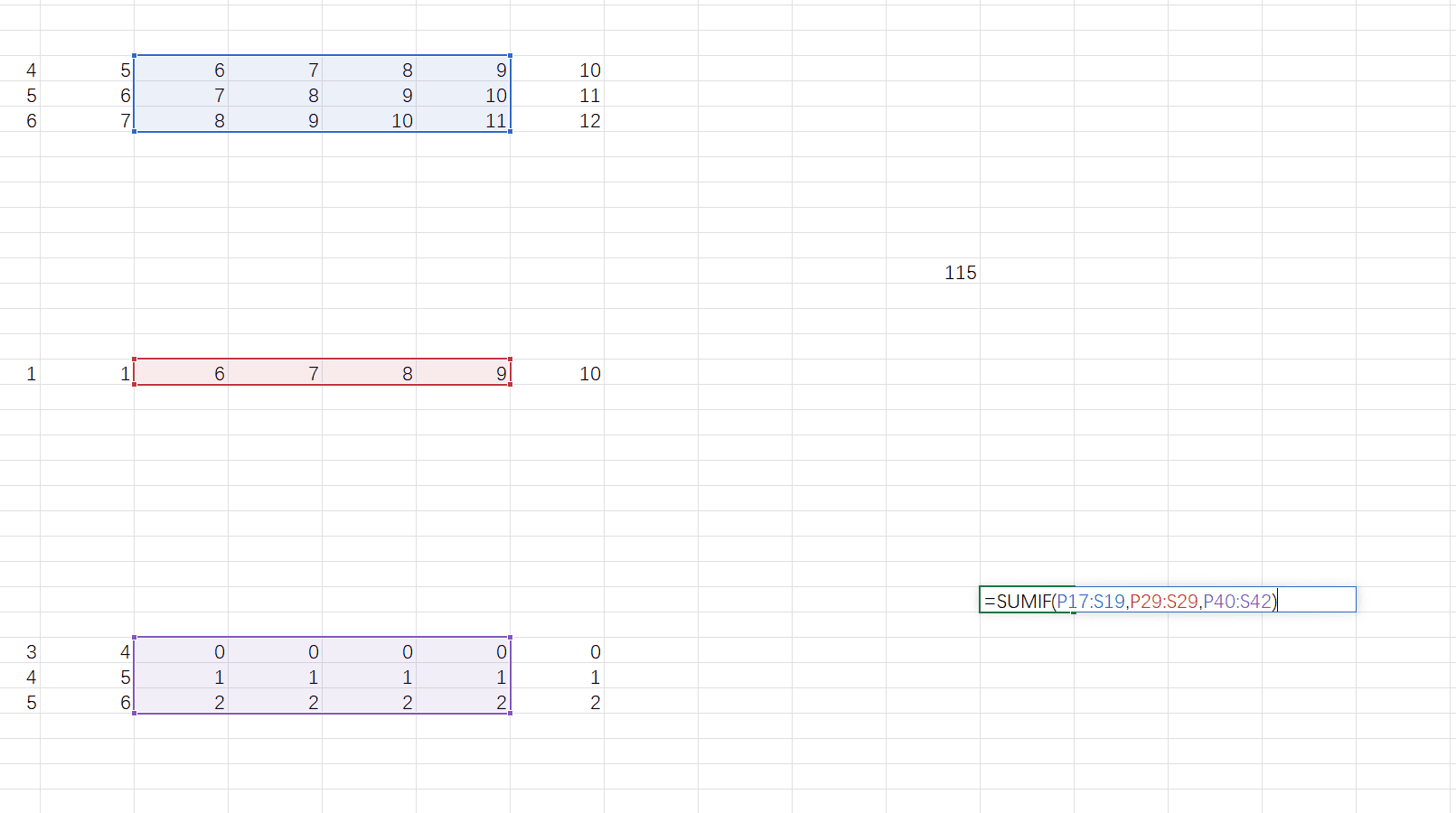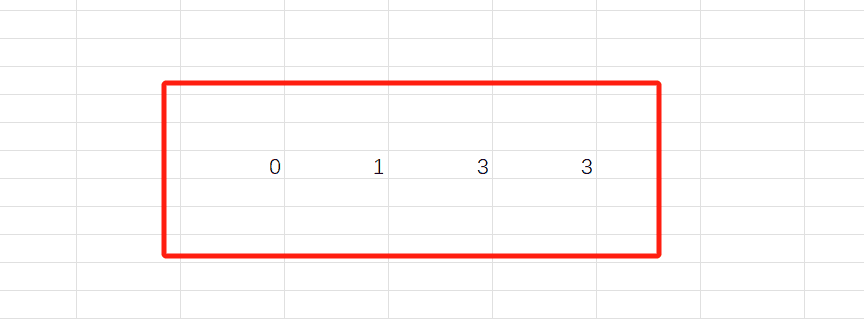Custom Formula
When the existing formulas do not meet your needs, you can register custom formulas in the following ways.
How To Configure Custom Formulas Through Plugin
Follow the steps below to implement a custom formula CUSTOMSUM, configure the formula information into the formula plugin, and register the formula plugin with Univer.
You can create a new custom-function.ts file to specifically place custom formula-related modules, or write it directly before univer is initialized.
-
Define formula name
First, give the formula a name. We require that it cannot be repeated with the name of the existing formula. The existing formula is mainly from Office Excel refer to.
We collect multiple custom formulas in an enumeration.
/** * function name */ export enum FUNCTION_NAMES_USER { CUSTOMSUM = 'CUSTOMSUM', } -
Define internationalization
Define the international content you need. For detailed field descriptions, please refer to the How to add formulas in Formula Engine section. Similarly, multiple formulas are distinguished by using the formula name as the
keyvalue./** *i18n */ export const functionEnUS = { formulaCustom: { CUSTOMSUM: { description: `You can add individual values, cell references or ranges or a mix of all three.`, abstract: `Adds its arguments`, links: [ { title: 'Instruction', url: 'https://support.microsoft.com/en-us/office/sum-function-043e1c7d-7726-4e80-8f32-07b23e057f89', }, ], functionParameter: { number1: { name: 'number1', detail: 'The first number you want to add. The number can be like 4, a cell reference like B6, or a cell range like B2:B8.', }, number2: { name: 'number2', detail: 'This is the second number you want to add. You can specify up to 255 numbers in this way.', }, }, }, }, } export const functionEnUS = { formulaCustom: { CUSTOMSUM: { description: '将单个值、单元格引用或是区域相加,或者将三者的组合相加。', abstract: '求参数的和', links: [ { title: '教学', url: 'https://support.microsoft.com/en-US/office/sum-%E5%87%BD%E6%95%B0-043e1c7d-7726-4e80-8f32-07b23e057f89', }, ], functionParameter: { number1: { name: '数值1', detail: '要相加的第一个数字。 该数字可以是 4 之类的数字,B6 之类的单元格引用或 B2:B8 之类的单元格范围。', }, number2: { name: '数值2', detail: '这是要相加的第二个数字。 可以按照这种方式最多指定 255 个数字。', }, }, }, }, } -
Registration internationalization
Expand the internationalization content you defined in the original internationalization object.
import { LocaleType, mergeLocales } from '@univerjs/core' import DesignEnUS from '@univerjs/design/locale/en-US' import DocsUIEnUS from '@univerjs/docs-ui/locale/en-US' import SheetsUIEnUS from '@univerjs/sheets-ui/locale/en-US' import SheetsEnUS from '@univerjs/sheets/locale/en-US' import UIEnUS from '@univerjs/ui/locale/en-US' import { functionEnUS, functionZhCN } from './custom-function' export const locales = { [LocaleType.EN_US]: mergeLocales( SheetsEnUS, DocsUIEnUS, SheetsUIEnUS, UIEnUS, DesignEnUS, functionEnUS, ), [LocaleType.ZH_CN]: mergeLocales( functionZhCN, ), } -
Definition description
The description of the formula mainly configures internationalized fields, which are used for formula search prompts, details panels, etc.
import type { IFunctionInfo } from '@univerjs/engine-formula' import { FunctionType } from '@univerjs/engine-formula' /** * description */ export const FUNCTION_LIST_USER: IFunctionInfo[] = [ { functionName: FUNCTION_NAMES_USER.CUSTOMSUM, aliasFunctionName: 'formulaCustom.CUSTOMSUM.aliasFunctionName', functionType: FunctionType.User, description: 'formulaCustom.CUSTOMSUM.description', abstract: 'formulaCustom.CUSTOMSUM.abstract', functionParameter: [ { name: 'formulaCustom.CUSTOMSUM.functionParameter.number1.name', detail: 'formulaCustom.CUSTOMSUM.functionParameter.number1.detail', example: 'A1:A20', require: 1, repeat: 0, }, { name: 'formulaCustom.CUSTOMSUM.functionParameter.number2.name', detail: 'formulaCustom.CUSTOMSUM.functionParameter.number2.detail', example: 'B2:B10', require: 0, repeat: 1, }, ], }, ] -
Registration description
Pass in the description object you defined when registering the formula plugin.
// universal univer.registerPlugin(UniverSheetsFormulaUIPlugin, { description: FUNCTION_LIST_USER, }) -
Define formula algorithm
-
Extends
BaseFunctionclassWrite specific formula calculation logic, map algorithms and formula names.
import type { ArrayValueObject, BaseValueObject, IFunctionInfo } from '@univerjs/engine-formula' import { BaseFunction, FunctionType, NumberValueObject } from '@univerjs/engine-formula' /** * Function algorithm */ export class Customsum extends BaseFunction { override calculate(...variants: BaseValueObject[]) { let accumulatorAll: BaseValueObject = NumberValueObject.create(0) for (let i = 0; i < variants.length; i++) { let variant = variants[i] if (variant.isError()) { return variant } if (accumulatorAll.isError()) { return accumulatorAll } if (variant.isArray()) { variant = (variant as ArrayValueObject).sum() } accumulatorAll = accumulatorAll.plus(variant as BaseValueObject) } return accumulatorAll } } // Mapping of algorithms and names export const functionUser = [[Customsum, FUNCTION_NAMES_USER.CUSTOMSUM]] -
Asynchronous calculation
Formula algorithms can also be marked with
isAsyncto return asynchronous results. APromiseis passed into the returnedAsyncObject, andPromise.resolvecan acceptBaseValueObjectorArrayValueObject./** * Get data asynchronously and assign it to a single formula value */ export class CustomAsyncObject extends BaseFunction { override calculate(value: BaseValueObject) { return new AsyncObject(asyncObjectFunction(value)) } override isAsync(): boolean { return true } } async function asyncObjectFunction(value: BaseValueObject) { return new Promise((resolve: (value: BaseValueObject) => void) => { setTimeout(() => { resolve(StringValueObject.create(`Async Info: ${value.getValue()}`)) }, 1000) }) } -
Meta data
In your custom function implementation you can use
BaseValueObject.withCustomDatato return and attach metadata. For instance, if you're building a custom function that calls a backend API to retrieve the weather forecast for a city, you can now attach metadata to the result. The custom function will return the current weather data and include additional information, such as the low and high temperatures and the data source, as metadata. This metadata can be used for display in other components, like a custom side panel.Example:
export class GetWeatherFunction extends BaseFunction { override calculate(cityObject: BaseValueObject) { return new AsyncObject(invokeAPI(cityObject)) } } async function invokeAPI(cityObject: BaseValueObject) { try { const city = cityObject.getValue() const response = await ApiService.get(`/get/${city}`) const metadata = { low: response.low, high: response.high, source: response.source, } return StringValueObject.create(response.current).withCustomData(metadata) } catch (error) { return new ErrorValueObject(ErrorType.VALUE) } }In this example, invoking the custom function will set the cell value to the current weather (
response.current) while also attaching metadata for the low and high temperatures, as well as the source of the weather data. This metadata can be displayed in a custom side panel or used by other components in the application.
-
-
Registration formula algorithm
Pass in the formula algorithm object you defined in
UniverFormulaEnginePlugin.createUniver({ presets: [ UniverSheetsCorePreset({ formula: { function: functionUser, }, }), ], })univer.registerPlugin(UniverFormulaEnginePlugin, { function: functionUser, })If
UniverFormulaEnginePluginis instantiated inworker, you need to register the formula algorithm inUniverFormulaEnginePlugininworker, otherwise the custom formula cannot be executed. -
Test
At this point, the development of the custom formula is completed, and now it is time to test it. Enter
=CUSTOMSUMin any blank cell and expect to get a formula prompt. Here is a Custom Formula Demo for reference.
How To Add Formulas in Third-Party Plugin
If you are developing a Univer plugin, you can add custom formulas directly to the plugin to facilitate code management in a plugin repository.
Our internal UniverFormulaEnginePlugin plugin provides a function.service specifically for registering formula descriptions and algorithms.
First, create a new plugin, and then you can start adding custom formulas.
-
Create a new
custom-function.tsfile in thecommonfile and write all the basic modules required for the formula.import type { ArrayValueObject, BaseValueObject, IFunctionInfo } from '@univerjs/engine-formula' import { BaseFunction, FunctionType, NumberValueObject } from '@univerjs/engine-formula' /** * function name */ export enum FUNCTION_NAMES_USER { CUSTOMSUM = 'CUSTOMSUM', } /** *i18n */ export const functionEnUS = { formulaCustom: { CUSTOMSUM: { description: `You can add individual values, cell references or ranges or a mix of all three.`, abstract: `Adds its arguments`, links: [ { title: 'Instruction', url: 'https://support.microsoft.com/en-us/office/sum-function-043e1c7d-7726-4e80-8f32-07b23e057f89', }, ], functionParameter: { number1: { name: 'number1', detail: 'The first number you want to add. The number can be like 4, a cell reference like B6, or a cell range like B2:B8.', }, number2: { name: 'number2', detail: 'This is the second number you want to add. You can specify up to 255 numbers in this way.', }, }, }, }, } export const functionEnUS = { formulaCustom: { CUSTOMSUM: { description: '将单个值、单元格引用或是区域相加,或者将三者的组合相加。', abstract: '求参数的和', links: [ { title: '教学', url: 'https://support.microsoft.com/en-US/office/sum-%E5%87%BD%E6%95%B0-043e1c7d-7726-4e80-8f32-07b23e057f89', }, ], functionParameter: { number1: { name: '数值1', detail: '要相加的第一个数字。 该数字可以是 4 之类的数字,B6 之类的单元格引用或 B2:B8 之类的单元格范围。', }, number2: { name: '数值2', detail: '这是要相加的第二个数字。 可以按照这种方式最多指定 255 个数字。', }, }, }, }, } /** * description */ export const FUNCTION_LIST_USER: IFunctionInfo[] = [ { functionName: FUNCTION_NAMES_USER.CUSTOMSUM, aliasFunctionName: 'formulaCustom.CUSTOMSUM.aliasFunctionName', functionType: FunctionType.User, description: 'formulaCustom.CUSTOMSUM.description', abstract: 'formulaCustom.CUSTOMSUM.abstract', functionParameter: [ { name: 'formulaCustom.CUSTOMSUM.functionParameter.number1.name', detail: 'formulaCustom.CUSTOMSUM.functionParameter.number1.detail', example: 'A1:A20', require: 1, repeat: 0, }, { name: 'formulaCustom.CUSTOMSUM.functionParameter.number2.name', detail: 'formulaCustom.CUSTOMSUM.functionParameter.number2.detail', example: 'B2:B10', require: 0, repeat: 1, }, ], }, ] /** * Function algorithm */ export class Customsum extends BaseFunction { override calculate(...variants: BaseValueObject[]) { let accumulatorAll: BaseValueObject = NumberValueObject.create(0) for (let i = 0; i < variants.length; i++) { let variant = variants[i] if (variant.isError()) { return variant } if (accumulatorAll.isError()) { return accumulatorAll } if (variant.isArray()) { variant = (variant as ArrayValueObject).sum() } accumulatorAll = accumulatorAll.plus(variant as BaseValueObject) } return accumulatorAll } } export const functionUser = [[Customsum, FUNCTION_NAMES_USER.CUSTOMSUM]] -
Create a new
custom-description.controller.tsunder thecontrollersfolder to register formula internationalization content and description.import { Disposable, Inject, LifecycleStages, LocaleService } from '@univerjs/core' import { FUNCTION_LIST_USER, functionEnUS, functionZhCN } from '../common/custom-function' import { IDescriptionService } from '../services/description.service' export class CustomDescriptionController extends Disposable { constructor( @IDescriptionService private readonly _descriptionService: IDescriptionService, @Inject(LocaleService) private readonly _localeService: LocaleService, ) { super() this._initialize() } private _initialize(): void { this._registerLocales() this._registerCustomDescriptions() } private _registerLocales() { this._localeService.load({ enUS: functionEnUS, zhCN: functionZhCN, }) } private _registerCustomDescriptions() { this._descriptionService.registerDescription(FUNCTION_LIST_USER) } } -
Create a new
custom-function.controller.tsunder thecontrollersfolder to register formula algorithms.import type { Ctor } from '@univerjs/core' import type { BaseFunction, IFunctionNames } from '@univerjs/engine-formula' import { Disposable, LifecycleStages } from '@univerjs/core' import { IFunctionService } from '@univerjs/engine-formula' import { functionUser } from '../common/custom-function' export class CustomFunctionController extends Disposable { constructor(@IFunctionService private readonly _functionService: IFunctionService) { super() this._initialize() } private _initialize(): void { this._registerCustomFunctions() } private _registerCustomFunctions() { const functions: BaseFunction[] = [...functionUser].map((registerObject) => { const Func = registerObject[0] as Ctor<BaseFunction> const name = registerObject[1] as IFunctionNames return new Func(name) }) this._functionService.registerExecutors(...functions) } } -
In the plugin entry file
plugin.ts, registercustom-description.controller.tsandcustom-function.controller.tsinto the DI system.export class UniverSheetsCustomFunctionPlugin extends Plugin { initialize(): void { // ... other logic const dependencies: Dependency[] = [ // ... other modules [CustomFunctionController], [CustomDescriptionController], ] dependencies.forEach(dependency => this._injector.add(dependency)) } }Start Univer and enter
=CUSTOMSUMin any blank cell to test this newly added formula.
Write a Plugin To Register Formulas
In addition to registering through the UniverFormulaEnginePlugin configuration, the formula algorithm module can also be separately packaged as a plugin for registration.
First of all, there is no need to register CustomFunctionController in plugin.ts. Create a new custom-function-plugin.ts in the same directory, specifically for registering CustomFunctionController.
import type { Dependency } from '@univerjs/core'
import { Inject, Injector, Plugin, PluginType } from '@univerjs/core'
import { FORMULA_UI_PLUGIN_NAME } from './common/plugin-name'
import { CustomFunctionController } from './controllers/custom-function.controller'
export class UniverSheetsCustomFunctionPlugin extends Plugin {
static override type = PluginType.Sheet
constructor(@Inject(Injector) override readonly _injector: Injector) {
super(FORMULA_UI_PLUGIN_NAME)
}
initialize(): void {
const dependencies: Dependency[] = [[CustomFunctionController]]
dependencies.forEach(dependency => this._injector.add(dependency))
}
override onReady(): void {
this.initialize()
}
}Then export it in index.ts
export { UniverSheetsCustomFunctionPlugin } from './custom-function-plugin'Register plugin
import { UniverSheetsCustomFunctionPlugin } from '@univerjs/sheets-formula'
// ...initialize other plugins
univer.registerPlugin(UniverSheetsCustomFunctionPlugin)How To Add Formulas in Formula Engine
Univer's goal is to be compatible with all Excel and Google Sheets formulas, and we hope everyone can help improve this part of the content.
How to Claim the Formula
- From Office Excel functions or Google Sheets function list, first find a formula you are interested in and check whether it has not been implemented in Univer and no one has claimed it in Github issues.
- Create a Feature request issue for each formula.
Comment under the mark
@yourself: I can solve it, example [Feature] Math Formula LET. - Wait for the maintainer's comment and confirmation before starting development.
How to Submit Code
- Refer to our Contribution Guides, fork Univer Project, and branch development from dev. The branch names are unified to
feat/formula-[function name], such asfeat/formula-sumif. - When developing code, pay attention to comply with our CONTRIBUTING
- Mark the close related issue in the PR, submit the PR, and rebase the upstream branch in time. Reviewers select
Dushusirto wait for code review and QA testing. - Merge into dev after passing code review and QA
How to Implement the Formula
Before officially starting to write code, it is recommended that you study Formula Architecture to have a comprehensive understanding of the formula system.
Familiar with the classification of formulas
- Financial
- Date
- Math
- Statistical
- Lookup
- Database
- Text
- Logical
- Information
- Engineering
- Cube
- Compatibility
- Web
- Array
- Univer
- User
- DefinedName
Detailed API reference FunctionType
To implement a formula, you need to add formula description, internationalization, and formula algorithm. Take the SUMIF function as an example for reference.
-
Add Function Name
Location: packages/engine-formula/src/functions/math/function-names.ts.
Each category has a folder containing a
function-namesfile to manage all function names in that category. Add the function name, which will be used in thesheets-formulaplugin.Note that a function in Excel may belong to multiple categories. For example,
FLOORappears in Compatibility and Math Functions, and we classify it under the Math category. Other functions are treated similarly, based on the exact classification.Most Excel functions have already written function names. New functions can be added at the end
-
Internationalization Files
Location: packages/sheets-formula-ui/src/locale/function-list/math/en-US.ts.
Internationalization is organized by category, with a file for each category. Refer to the Office function category page for a brief overview.

Refer to the Office function details page for function descriptions and parameter descriptions.

Most function names already have basic description, abstract, links, and parameter structures. It is recommended to modify them based on this foundation. If a function is not present, add it to the end.
Requirements:
- Use the English names of function parameters as the
keyfor translation, e.g.,SUMIF. Generally, do not modify unless there is an error. - Extract the
descriptionfrom the content, as some Excel descriptions are lengthy and need simplification. abstractandlinksgenerally do not need modification.aliasFunctionNameis optional; most formulas do not need to be filled (or can be set for aliases in specific countries). Currently, there is no documentation for formula aliases. Currently I have found a function translation plug-in that may provide similar functions Excel Functions TranslatorfunctionParameterneeds a name for each parameter. We recommend varying names based on the parameter's meaning, e.g., usenumberfor a numeric parameter (if there is only one) ornumber1,number2for multiple numeric parameters. Userangefor a range,criteriafor conditions, andsumRangefor the sum range, usecamelCase. For specific parameter content, the English format ofnameuses the underlined formatsum_range, other languages use the translated text, anddetailuses all translations.- Some Chinese translations in the Office function documentation are machine-translated and may be unclear. Modify as needed. For example,
单元格参考(Cell Reference) should be translated as单元格引用.- Numeric type parameters are uniformly translated as:
数值.
- Do not end
abstractwith a period (used in the search list when users input cells), but enddescriptionanddetailwith a period (used in descriptions). - Capitalize the first letter of English sentences.
- Ensure that all existing internationalization files are filled. Currently, there are: (languages can be switched at the bottom of the Excel introduction page)
en-US: Englishfr-FR: Frenchja-JP: Japaneseru-RU: Russianvi-VN: Vietnamesezh-CN: Simplified Chinesezh-TW: Traditional Chinese
- Use the English names of function parameters as the
-
Formula Descriptions
SUMIFbelongs to themathcategory, and the description is in packages/sheets-formula/src/services/function-list/math.ts, which manages all functions in themathcategory.Most function names already have basic description structure. It is recommended to modify them based on this foundation. If a function is not present, add it to the end.
Here is an example of
SUMIFconst SUMIF = { functionName: FUNCTION_NAMES_MATH.SUMIF, aliasFunctionName: 'formula.functionList.SUMIF.aliasFunctionName', functionType: FunctionType.Math, description: 'formula.functionList.SUMIF.description', abstract: 'formula.functionList.SUMIF.abstract', functionParameter: [ { name: 'formula.functionList.SUMIF.functionParameter.range.name', detail: 'formula.functionList.SUMIF.functionParameter.range.detail', example: 'A1:A20', require: 1, repeat: 0, }, { name: 'formula.functionList.SUMIF.functionParameter.criteria.name', detail: 'formula.functionList.SUMIF.functionParameter.criteria.detail', example: '">5"', require: 1, repeat: 0, }, { name: 'formula.functionList.SUMIF.functionParameter.sumRange.name', detail: 'formula.functionList.SUMIF.functionParameter.sumRange.detail', example: 'B1:B20', require: 0, repeat: 0, }, ], }Requirements:
- Add the formula to the
FUNCTION_LIST_MATHarray. It is recommended to keep the order consistent with the internationalization file for easy management and retrieval. - Reference the previously defined
FUNCTION_NAMES_MATHenum for thefunctionName. aliasFunctionNameis also optional; if there are no aliases in the internationalization file, you do not need to add them here.- Pay attention to the internationalized fields corresponding to the function name and parameter name. For example, the
nameoffunctionParameteris written asformula.functionList.SUMIF.functionParameter.range.name,SUMIFis the function name, andrangeis the parameter name. - Modify function parameter information, including the
exampleparameter example (e.g., for a range, use"A1:A20"; for conditions, use">5"), therequireparameter (1 for required, 0 for optional), and therepeatparameter (1 for allowed, 0 for not allowed). For detailed information, refer to the interface IFunctionParam.
- Add the formula to the
-
Formula Algorithm
Location: packages/engine-formula/src/functions/math/sumif/index.ts.
Create a new formula folder under the classification folder of the current formula. The folder name is the same as the formula, named with
kebab-case, one folder for each formula. Then create a newindex.tsfile to write the formula algorithm. The name of the formulaclassadoptsPascalCase. The formula is considered to be one word, and the formula with_or.is considered to be two words such asSUMIF=> foldersumif, classSumifNETWORKDAYS.INTL=> foldernetworkdays-intl, classNetworkdaysIntlARRAY_CONSTRAIN=> folderarray-constrain, classArrayConstrain
Create a
__tests__folder at the same level to write unit tests. After writing, remember to add the formula algorithm and function name mapping in thefunction-mapfile in the category directory to register the formula algorithm.Location: packages/engine-formula/src/functions/math/function-map.ts.
-
Unit Tests
Location: packages/engine-formula/src/functions/math/sumif/__tests__/index.spec.ts
Note:
- Supplement
sheetDataaccording to the formula's calculation needs, constructcellDatabased on the calculated data, and determinerowCountandcolumnCount. - Manually initialize the formula with
new Sumif(FUNCTION_NAMES_MATH.SUMIF). - Manually build the formula parameters for each test, and execute
calculateat the end. - Single formula tests are generally used for testing the algorithm of the current formula. If testing nested formulas with multiple formulas is needed, manually nest them or go to the
/packages/engine-formula/src/functions/__tests__directory to execute complex nested formulas.
- Supplement
-
Functional Tests
Start Univer in development mode, test formulas on the interface, and preconstruct data.
- In any blank cell, enter
=sumif. Expect a search prompt list to appear. - After selecting
SUMIFor entering=sumif(, trigger the formula details popup and carefully check the contents. - Select the data range, trigger the calculation, and check if the formula calculation result is correct.
- In any blank cell, enter
Considerations
-
For most formula rules, please refer to the latest version of Excel. If there are any unreasonable rules, please refer to Google Sheets.
-
The input and output parameters of any formula can be
A1,A1:B10, and the cell content may also be numbers, strings, Boolean values, empty cells, error values, arrays, etc., although the formula tutorial explains In order to identify fixed data types, the program implementation needs to be compatible. When researching Excel, consider all cases, such as=SIN(A1:B10), which expands to the calculated range.-
For example, the
XLOOKUPfunction requires at least one of the rows or columns of its two inputs to be of equal size for matrix calculation. -
For example, the
SUMIFfunction, although commonly used for summation, can expand based on the second parameter.

-
Excel formula calculation is becoming more like numpy, for example:

-
-
In formula algorithms, the number of parameters passed in needs to be checked. If it is less than the number of required parameters, or more than the number of required + optional parameters,
#N/Awill be returned (this behavior will be intercepted in Excel, and#N/Awill be returned in Google Sheets, we refer to Google Sheets). -
For numerical calculations in formulas, use built-in methods and try to avoid obtaining values for manual calculation. Because formula parameters can be values, arrays, or references. You can refer to existing
sumandminusfunctions. -
Precision issues: The formula introduces
decimal.js, and using built-in methods will call this library. However, it is nearly 100 times slower than native calculations. Therefore, for methods likesin, it is advisable to use native implementations. -
For custom calculations, use the
productfunction, suitable for calculating two input parameters. Callmapto iterate over the values for changes to a parameter's own values. -
Some formula algorithms need special configurations, see
BaseFunctionfor details, for example:needsExpandParamsandneedsReferenceObjectneedsExpandParams: Whether the function needs to expand parameters, mainly handles situations where theLOOKUPfunction needs to handle vectors of different sizesneedsReferenceObject: Whether the function needs to pass in a reference object. After setting,BaseReferenceObjectwill not be converted intoArrayValueObjectbut will be passed directly into the formula algorithm, such as theOFFSETfunction
-
Formula calculation errors will return fixed types of errors, such as
#NAME?,#VALUE!, which need to be aligned with Excel, because there are functionsISERR,ISNA, etc. that determine the error type. If the type is not specified correctly, the result will be It may be different. -
Functions that support reference objects, such as OFFSET, INDIRECT, and ADDRESS, need to be marked with
isAddressto determine whether the associated range needs to be obtained from the reference object. Refer to the implementation of theOFFSETfunction.
Basic Tools
ValueObjectFactoryis used to automatically recognize parameter formats and create a parameter instance. UseRangeReferenceObjectto create parameter instances for range-type data.- The array
toArrayValueObjectcan be operated directly with values to get a new array.
How is this guide?
